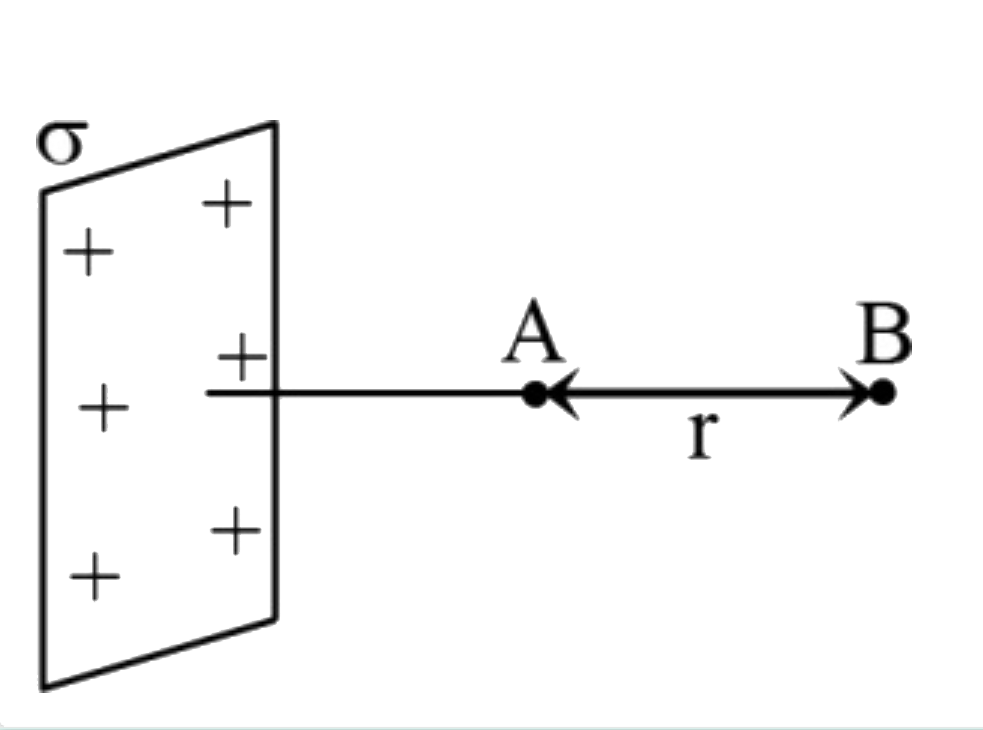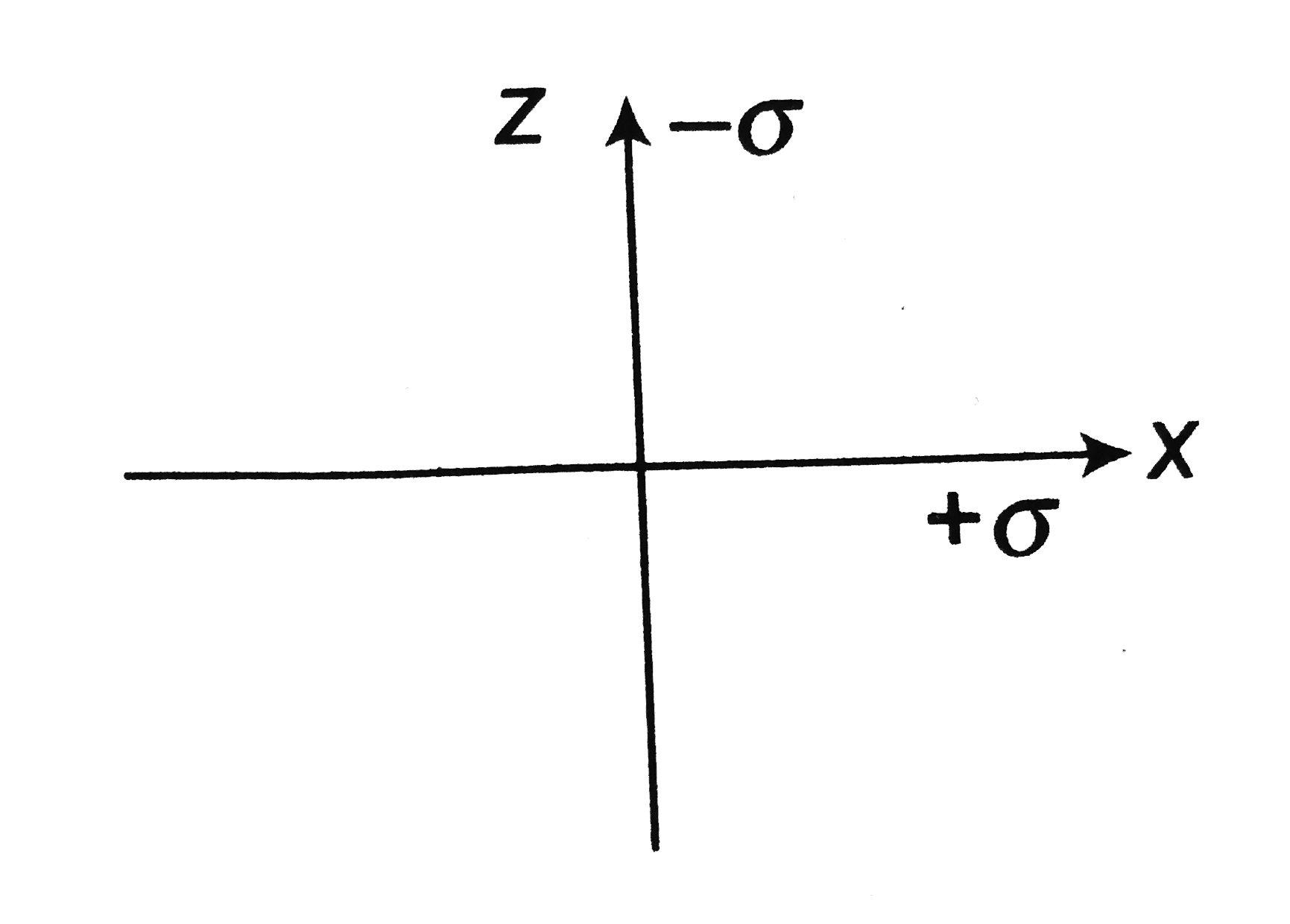Two infinite, parallel, nonconducting sheets carry equal positive charges density σ. One is placed in the yz plane and the other at distance x=a. Take potential V=0 at x=0. Then.
For 0<x<a, potential V=0.
For x>a, potential V=−σ∈0(x−a)
For x>a, potential V=σ∈0(x−a)
For x<0 potential V=σ∈0x
0<x<a:V=[−∫x0Exdx]+V(0) =0(as Ex=0)
x>a,V=−∫xaExdx+V(a) =[−∫xaσ∈0dx]+V(a)=−σ∈0(x−a)
x<0,V=−∫x0Exdx+V(0) =−(−σ∈0.x)+V(0)=σ∈0.x
Topper's Solved these Questions
Similar Questions
Two infinite parallel,non- conducting sheets carry equal positive charge density σ ,One is placed in the yz plane other at distance x=a Take potential V=0 at x=0 then
View SolutionAn infinite conducting sheet has surface charge density σ. The distance between two points is r. The potential difference (VA−VB) between these point is
 View Solution
View Solution
Knowledge Check
- Question 1 - Select One
Two infinite plane parallel sheets, separated by a distance d have equal and opposite uniform charge densities σ. Electric field at a point between the sheets is
Aσ2ε0Bσε0CzeroDdepends on the location of the point
An infinite sheet of charge has surface charge density σ . The separation between two equipotential surfaces, whose potential differ by V is:
View SolutionAn infinite non-conducting plane with uniform charge density σ is kept parallel to yz plane and at a distance 'd' from a dipole →p which itself is located at the origin. An equipotential surface for this system is spherical, centred at origin, having radius R(<d). Given that R=(pnπσ)1/3, find the integer n
 View Solution
View SolutionIn front of a uniformly charged infinite non-conducting sheet of surface charge density σ, a point charge q0 is shifted slowly from a distance a to b(b>a). If work done by external agent is W, then find out relation between the given parameters.
View SolutionTwo infinite sheets of unifrom charge density +σand−σ are parallel to each other as shown in the figure. Electric field at the
 View Solution
View SolutionAn infinite nonconducting sheet of charge has a surface charge density of 107C/m2. The separation between two equipotential surfaces near the whose potential differ by 5V is
View SolutionTwo infinitely large charged planes having uniform suface charge density +σ and −σ are placed along x−y plane and yz plane respectively as shown in the figure. Then the nature of electric lines of forces in x−z plane is given by:
 View Solution
View SolutionA nonconducting disk of radius a and uniform positive surface charge density σ is placed on the ground, with its axis vertical. A particle of mass m and positive charge q is dropped, along the axis of the disk, from a height H with zero initial velocity. The particle has q/m=4ε0g/σ.
(i) Find the value of H if the particle just reaches the disk.
(ii) Sketch the potential energy of the particle as a function of its height and find its equilibrium position.View Solution

